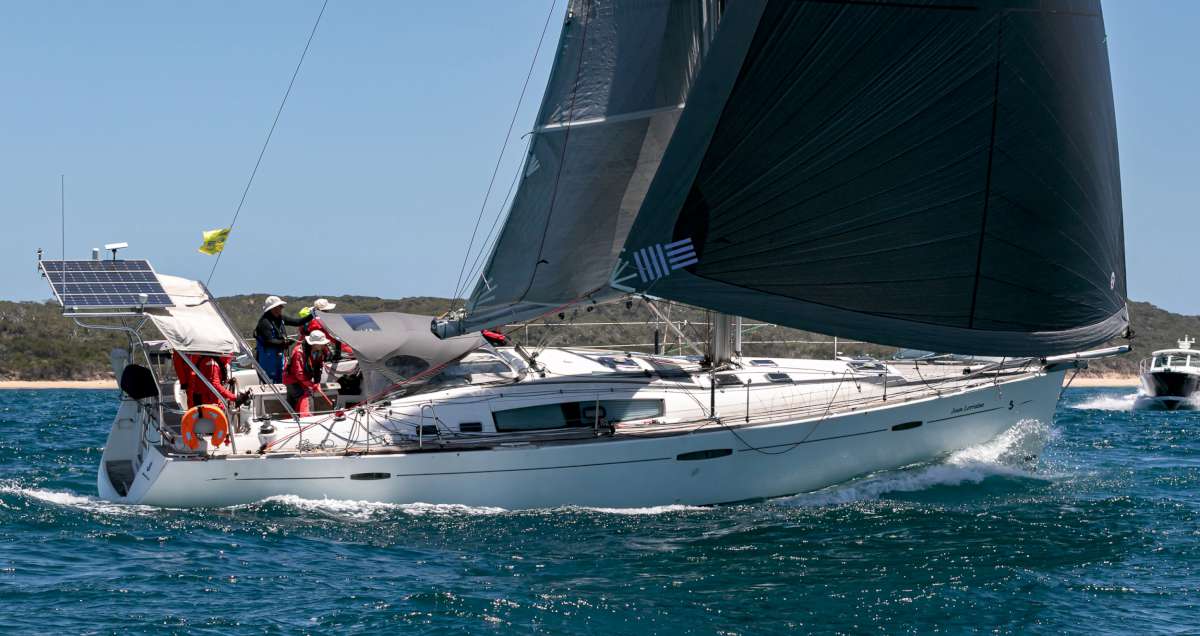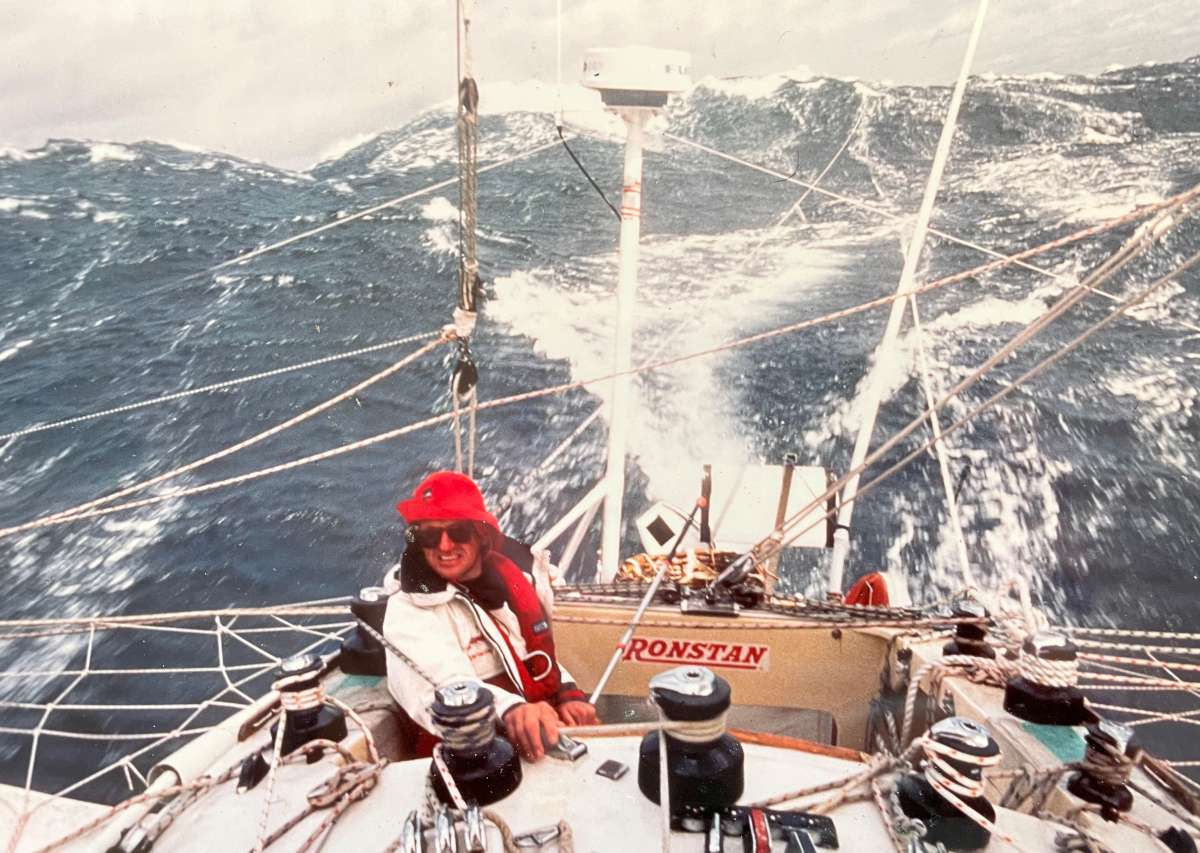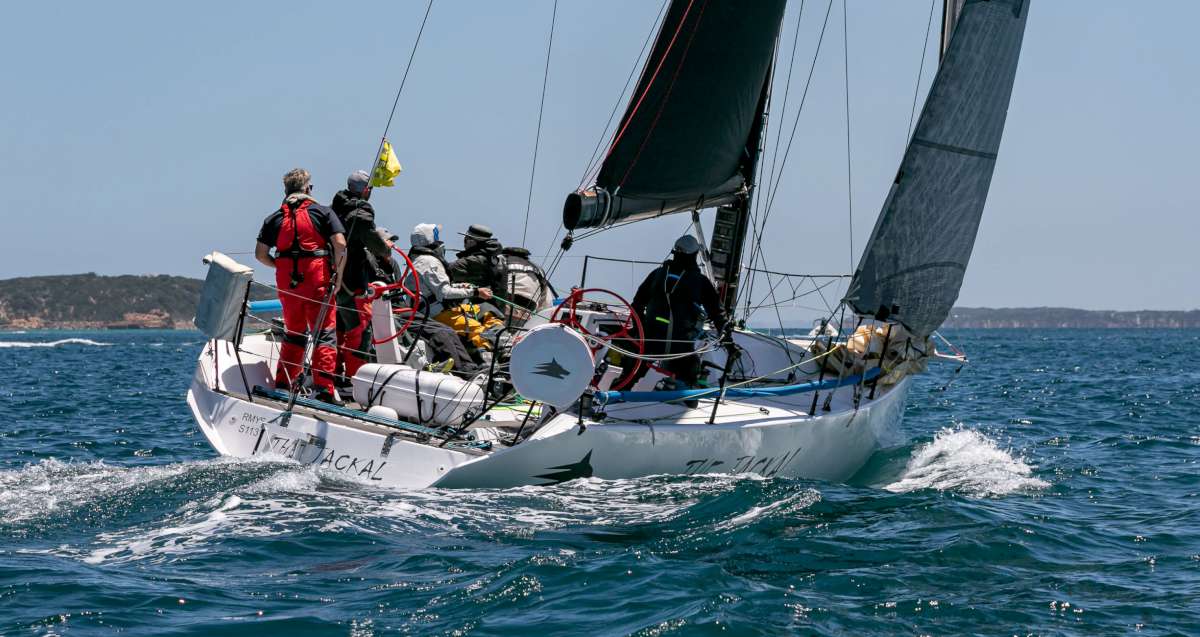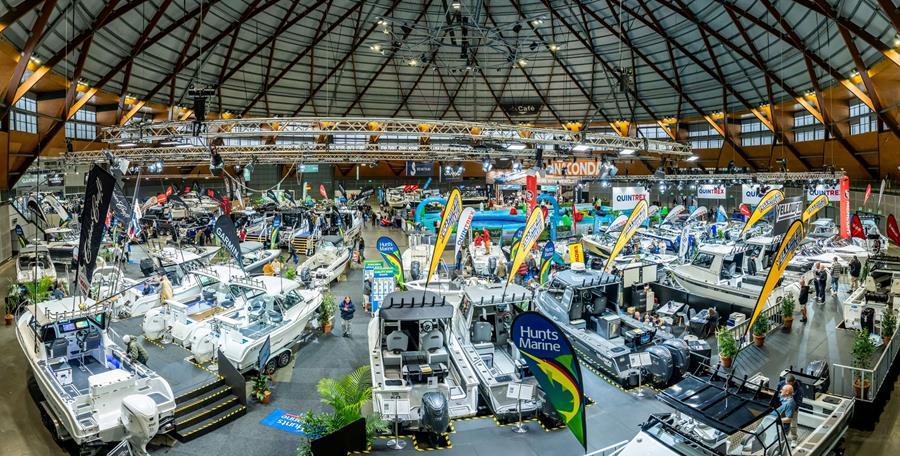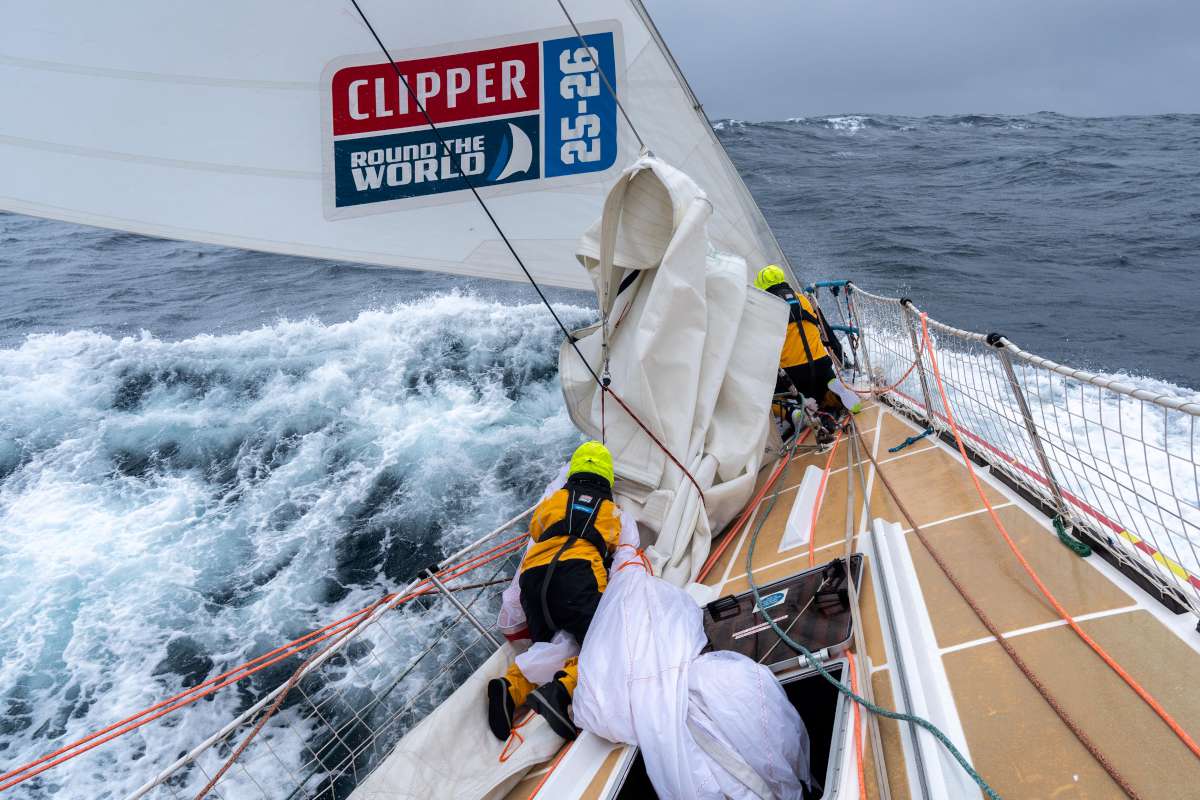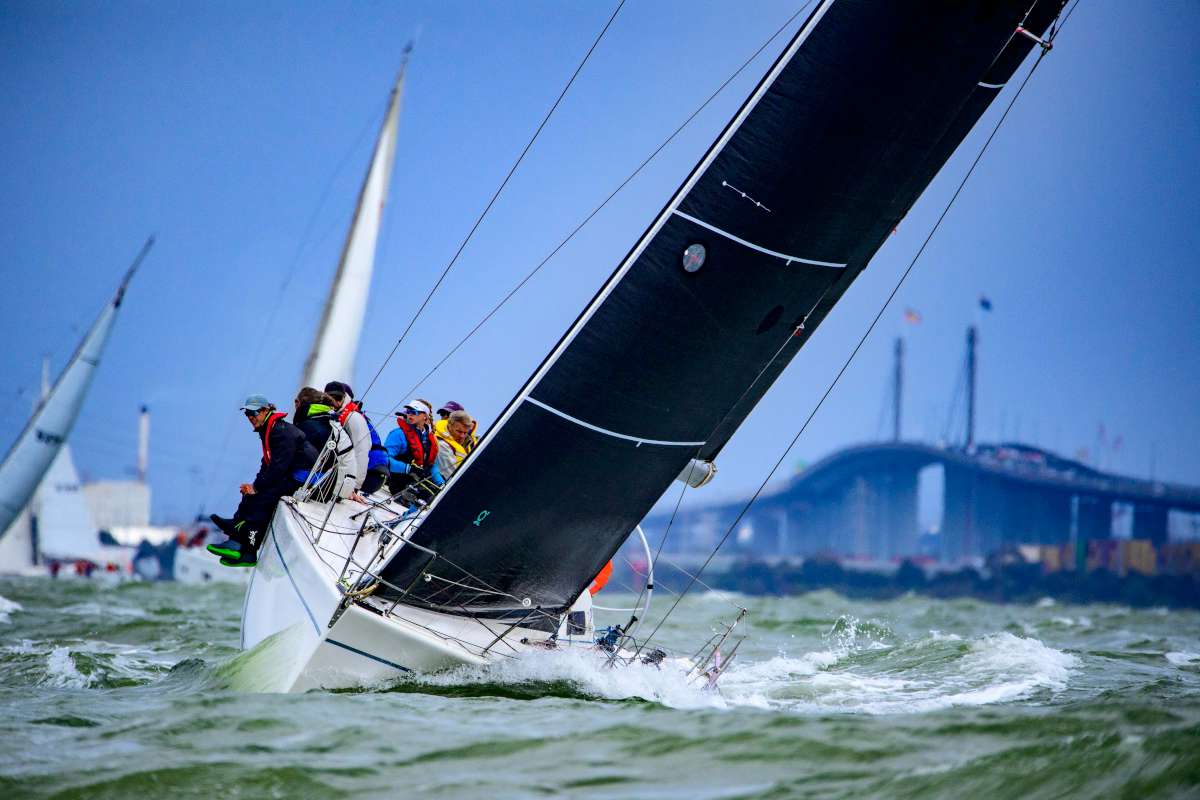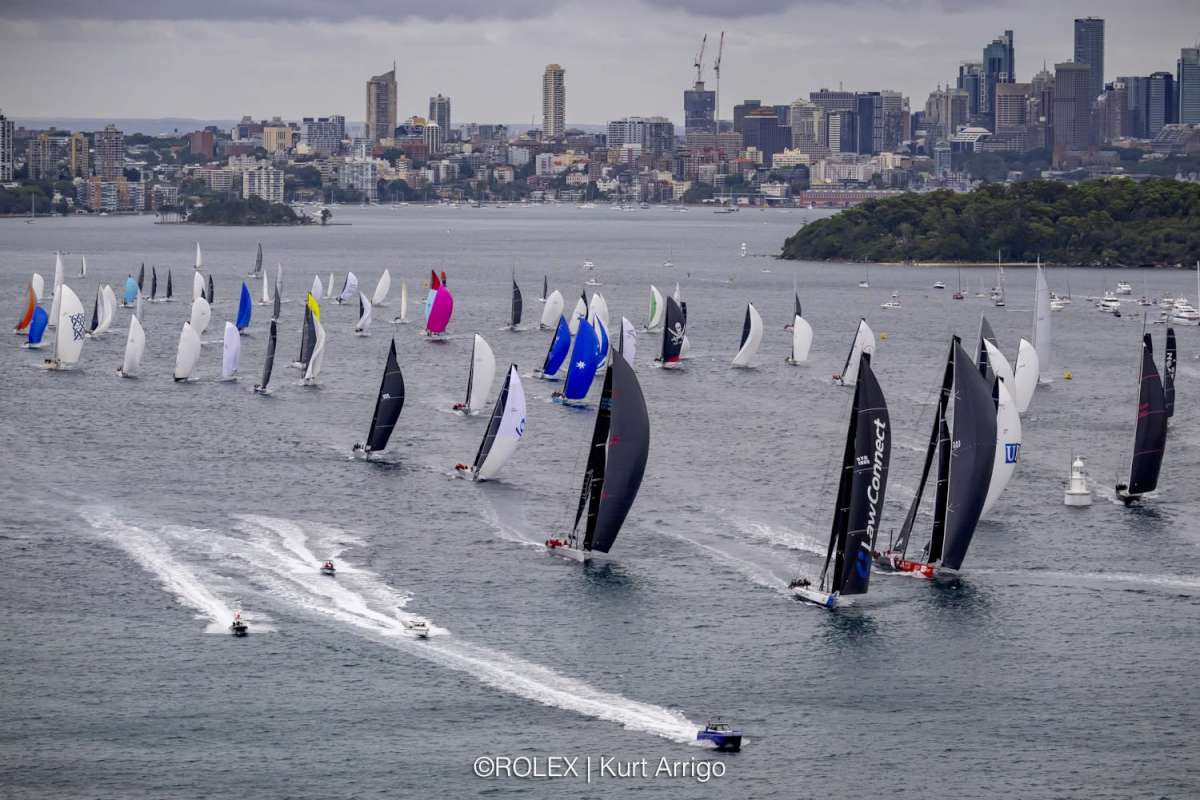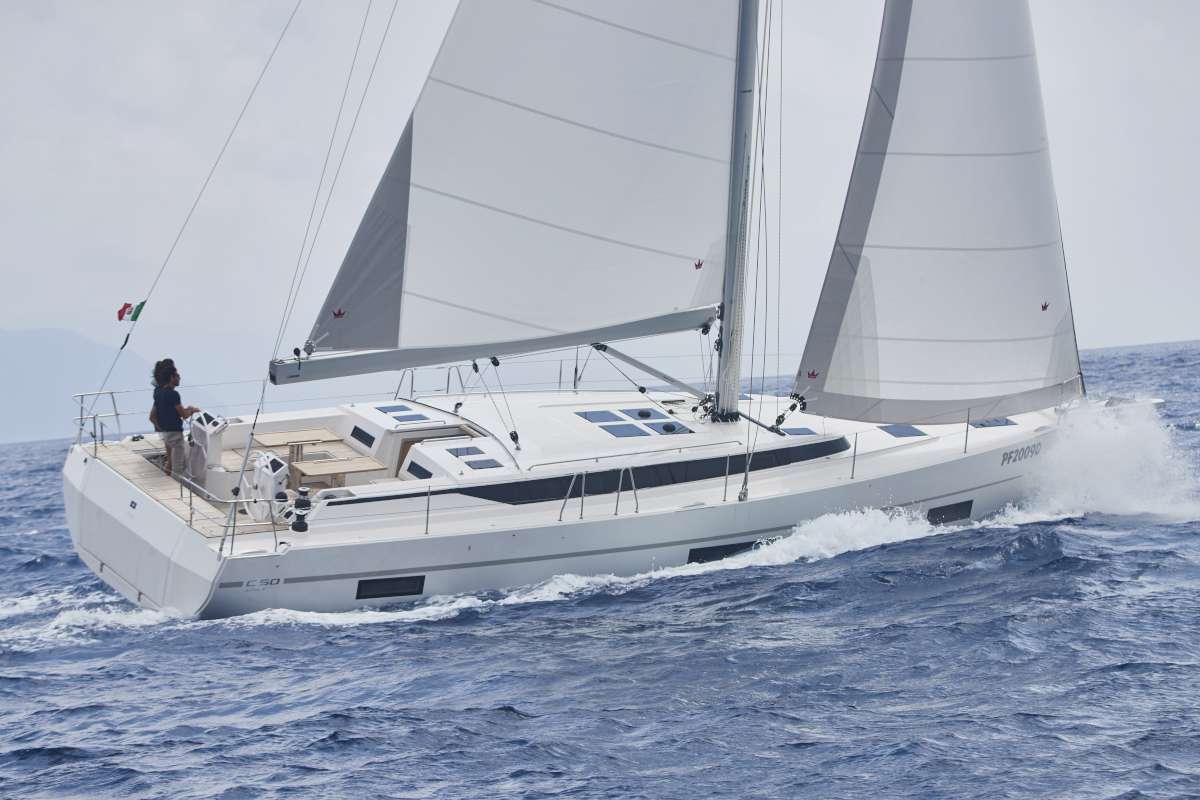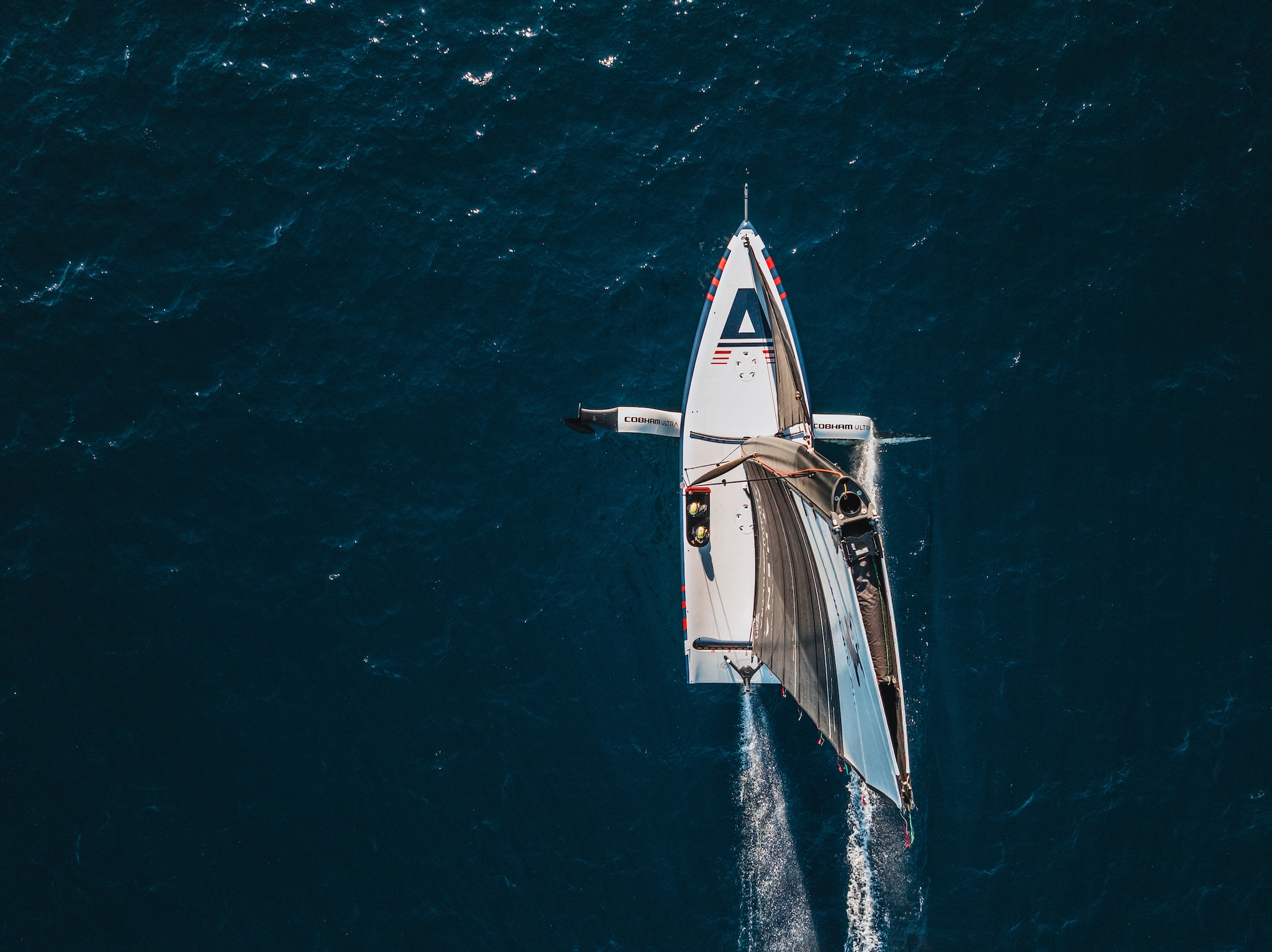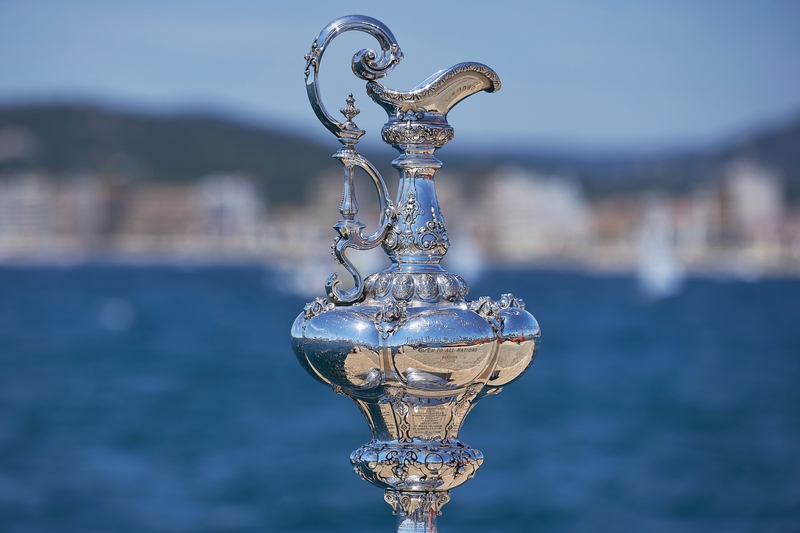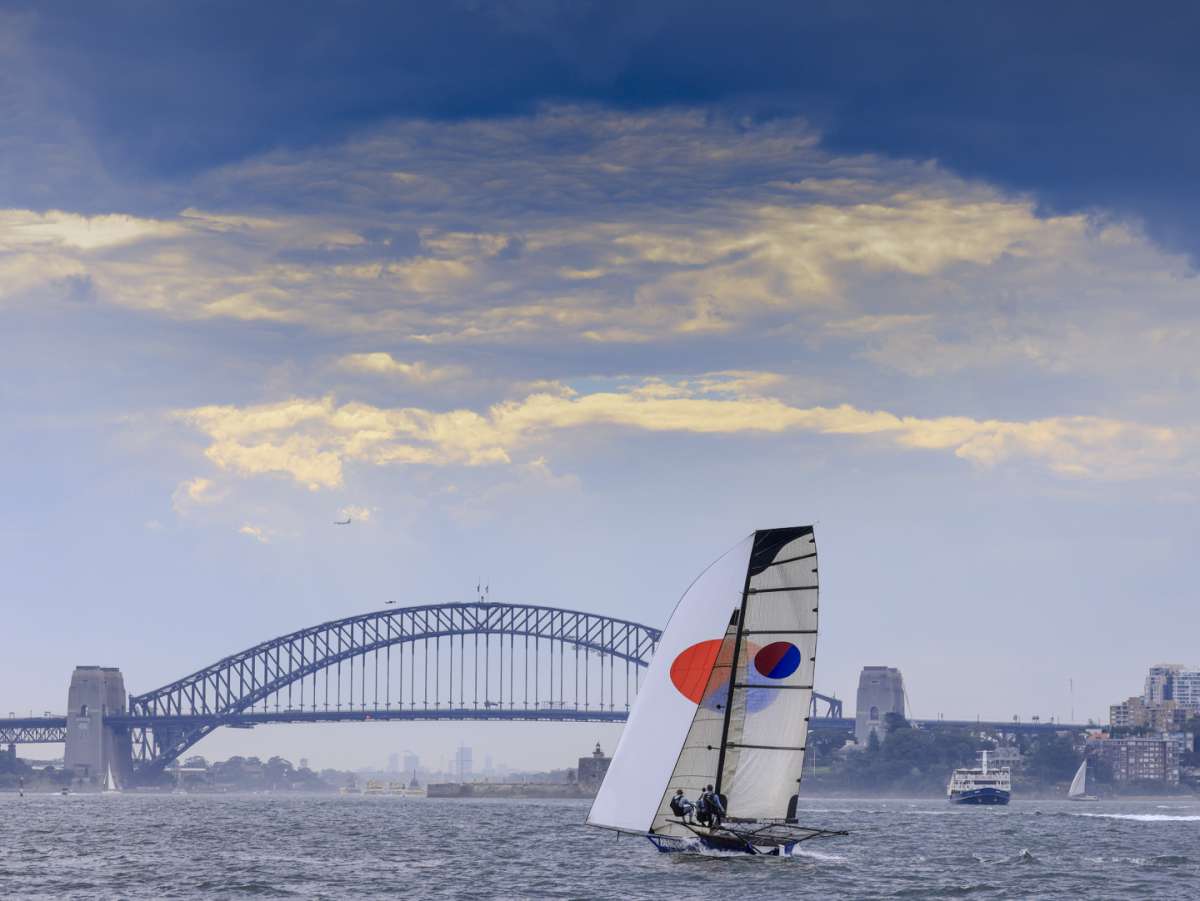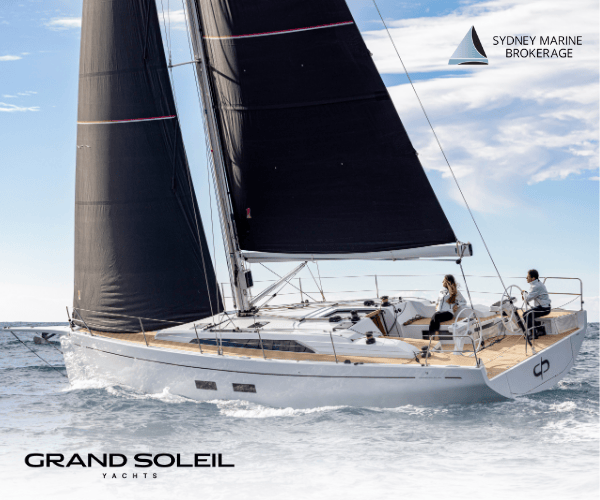PRACTICALITIES BY ANDREW BRAY
Keeping up to date with what's available gives the sailor even more freedom and assurance on the water. We look at the situation now and ahead and at what options we have.
Current safety comms in Australia
The spread of mobile phones, satellite communications and GMDSS digital alerting through HF DSC has led to the closure of Federal Government-subsidised Telstra coast stations which previously provided VHF and HF weather and radio telephone services. Weather fax continues to be broadcast on HF (until 2010 at least), and HF weather forecasts are enunciated on a regular schedule and several frequencies.
(www.bom.gov.au for details). MSI (weather and other safety information) is also disseminated via Satcom-C.
VHF
The extensive Telstra coast station network has gone. Port Authority stations in most coastal cities now monitor VHF channels 16 and 67 24/7, and issue weather information on 67. Various private and volunteer organisations within each State provide VHF coverage in many other areas, but not necessarily 24/7, and some also monitor/use 27MHz. But many coastal areas are now out of VHF range of any coast station, or only have coverage during certain operating hours. This highlights the importance of all vessels keeping a listening watch on DSC and channel 16, and vessels in many areas are best to have longer range emergency communications capabilities.
HF
Yachts with modern HF DSC radios have access to the GMDSS system which in theory should receive alerts from anywhere near Australia. In practice it?s a complex system, and since only the two ?Desert Radio? stations are listening for HF DSC alerts, is very dependent on the operator choosing the correct one of five available frequencies to suit the range and time of day. There is an alternative, available to both DSC and older marine HF transceivers, where port stations at Perth, Darwin, Cairns, Gladstone, Sydney, Melbourne, Adelaide and Hobart maintain a 24/7 distress aural listening watch on 4125 kHz, 6215 kHz and 8291kHz (but not 2182 MHz.). One could be concerned about the diligence of this watchkeeping by staff attending to other duties in a sometimes busy office, but it?s better than nothing. Some volunteer coast stations also monitor HF, but not necessarily 24/7.
The bottom line these days is that coast station VHF and HF distress coverage is not as good as it used to be and that skippers really need to be aware of what the communications possibilities are in their area of operation.
EPIRBs
Beyond the patchy coastal coverage of VHF (and mobile phones), yachts without HF or satellite communications rely on EPIRBs. The slow and imprecise polar satellite detection of the old 121.5MHz analog EPIRB system ceases worldwide in February 2009. But the latest 406 MHz units with inbuilt GPS receivers (eg GME Accusat 403G (which, at the time of writing is estimated to sell for $699) should alert AMSA within minutes via geostationary satellites. It also allows any rescuer to head for a precise position ? not just specially equipped search vessels or aircraft fitted with homing receivers. The big limitations of EPIRBs are, of course, that they don?t provide two-way communications and can?t convey any details of the emergency.
Satellite comms
Various types of satcoms can be fitted (see later), and even if not GMDSS approved, most should be able to contact AMSA from anywhere near Australia.
Many commercial vessels are actually required to fit GMDSS approved Satcom-C equipment, requiring only a small omnidirectional antenna. The Mini-C service can be used for email, position reporting (and polling), fax, telex and mobile-to-mobile messaging. Also for receiving MSI weather and safety messages in the Australian region. Satcom-C is fitted to many offshore racing yachts, as an alternative to HF, which has always been vulnerable to sudden propagation fades due to solar activity and to loss of the mast which typically supports the antenna. However, Satcom-C doesn’t provide phone or internet and is very slow (600bps) and seriously expensive for email.
Email and internet options
Concurrent with evolving safety comms has been the dramatic growth in the importance of mobile phones, email and the internet. Not every sailor wants all these communications modes, but for others they?re highly desirable, or even critical because they allow business or social affairs to be conducted from on board. The communications can also be relevant to sailing, such as when the latest GRIB files (weather data) are received as email attachments or Notices to Mariners downloaded from the internet. There are many options, depending on where, or at what range and speed the services are desired, and how much you?re prepared to pay for equipment and fees.
WiFi
Email and internet are now available in and near many marinas, via wireless or WiFi. With an appropriate modem and external antenna, ranges of several hundred metres from the base station are possible, with data rates depending on range and number of vessels sharing the hotspot.
Wireless broadband
Much longer ranges and higher data rates are achieved with wireless broadband which is spreading rapidly as mobile phone networks upgrade to 3G.
Of particular relevance may be using a wireless terminal that provides connections for a phone handset, can handle faxes, and via a laptop provide internet and email. For example, the Ericsson W25 (approx. $1100 from www.powertec.com.au) ) can be used with 3G networks to about 40km range, and to perhaps double this with a larger passive gain masthead antenna (1.1m tall whip costing about $150). Active ?booster? antennae aren?t permitted because they can degrade the system for other users, but there is scope for using stabilised directional antennae to increase range even further.
Mobile data rates vary with range, and the plan, but for example on Telstra?s Next-G?s ?G-Fast? rate, $85 buys a GB of data per month. This is less than one per cent of satellite data prices and should work inshore along much of Australia?s settled coastline. The terminals can also work with conventional GSM networks and with local SIMs so the investment may be useful overseas too.
HF email
Beyond range of the cellular networks, email with very modest attachments, such as a GRIB file, can be sent and received via HF radio using a TNC modem. The data rates are painfully slow and the process can be frustrated by HF propagation or traffic congestion but HF email has been a resounding success with cruising sailors in particular. Most use marine HF transceivers (not necessarily DSC capable) and the Sailmail system, which has a $US200 annual subscription. Sailmail has limits of 10kb per email, 30kb per attachment and 90 minutes usage a week.
But beyond the cellular network range, the only way to have phone or email with large attachments or internet, is via satellite. Satellites can also provide safety communications that are far more user-friendly than HF and probably more reliable.
Satellites
There are a lot of choices – equipment size, cost and power drain. Also geographic coverage, data rate and charges for access/usage vary enormously between systems. Some are available in GMDSS approved versions; with a single button to send an alert including position and nature of emergency.
Inmarsat geostationary systems
Despite its name, Inmarsat is not an exclusively marine service and provides various digital communications modes for many purposes including aviation. It uses a variety of geostationary satellites (some are now fourth generation) to provide worldwide coverage between the latitudes of 78 degrees South and North. Access and usage contracts are with providers but Inmarsat doesn?t charge for GMDSS traffic. Charges have come down substantially but are still extremely expensive compared with terrestrial telecommunications and, in most cases, much slower. Systems tend to be installed on luxury vessels or where business communications justify the expense.
The type and size of antenna needed depends on the data rate of the service but most require a directed antenna, which on a boat generally implies a three-axis stabilised dish within a dome, so the equipment also tends to be pricey.
There are too many brands and variations to canvas details here, including whether the system is interfaced with a laptop or has a dedicated terminal, but KVH?s website (www.kvh.com/KVHSatCom) provides a good basis for comparing costs and capabilities of the various Inmarsat services, although the prices are in US dollars.
Currently its smallest hardware offering – phone and internet – is TracPhone 252. This uses the Mini-M service which covers most but not all areas – there are holes in the South Pacific, in particular. The unit has a 25cm dome, draws 25 watts on standby and can carry voice, fax and data, including email and internet to around 9.6kbs.
Note, that satellite data rates are often quoted in bits not bytes -eight bits equals one byte. A bit is usually denoted as kbps – 1000 bits per second.
A byte usually denoted as KB, representing 1000 bytes. So even with the compression software (effective and widely used) this is way slower than dial-up.
Inmarsat has various faster systems including F33, F55, and F77. By the way “F” stands for ?Fleet? and the numbers relate to the dome diameter in cm. Plans associated with these faster systems generally charge for phone on a per minute basis but permit ?always on? data connections, charged for bits uploaded and downloaded rather than time. Their latest FB service (“B” for broadband and also called BGAN, (Broadband Global Area Network) is available in the Indian and Atlantic and should be in the Pacific by mid 2008. As a guide the Australian agent for KVH (Coursemaster) expect the smallest FB unit (27cm dome, capable of 284 kbps – marginally slower than a 58KB dial-up modem) to retail here for about $A19,000, with data costing $13.50/MB.
Other geostationary satellite systems
Voice and data services are also available on a regional basis via non-Inmarsat geostationary satellites, such as the Optus MobileSat service in Australia, which offers comparable performance to Mini-M.
LEO satellites
Low Earth Orbit (LEO) satellites pass only hundreds of miles above the earth, compared with the 22,000 mile height of the geostationary satellites, and therefore can communicate with low power handheld transceivers with unstabilised omni-directional antenna. There are currently only two relevant systems – Globalstar and Iridium both of which offer phone, SMS and slow but tolerably reliable email and internet access. They are cheaper to buy than Satcom-C (which doesn?t offer phone) and although neither is part of GMDSS, either could probably be used to phone SAR authorities directly. Voice quality is not as good as with the geostationary systems but the delays are usually shorter. Most yachting transceivers are handhelds with rechargeable batteries, so could even be used from a liferaft if put inside a waterproof bag. This would complement 406MHz EPIRBS very nicely in such situations and 12Volt cradles, data terminals and external antenna are available. Power drain on standby is small (as with Satcom-C) so it's more practical to leave cradled equipment turned on to receive in-coming calls or messages. Drop-outs occur when a mast obstructs the signal. And unfortunately (unlike geostationary systems where the satellite direction is known) the user cannot orient the yacht to avoid this. Dual mode handsets that can be used with the local GSM or CDMA cellular network are available in some countries.
In Australia, under some circumstances, handsets are eligible for a purchase subsidy and there is also a strong market for refurbished handsets, so equipment costs are particularly variable but are often under $2,000. Hiring is another possibility.
Globalstar
Globalstar satellites must be simultaneously within range of the handset and a ground station and therefore the service does not cover some coasts, deep ocean areas or extreme polar latitudes. However, all Australian coastal and some offshore waters are covered.
Iridium
Although it is prohibited in a few countries, Iridium provides complete global coverage by routing signals to ground stations (or directly to another handset) via other satellites. Although the SIM card is issued by the local telco, there are no global roaming charges so Iridium particularly suits yachts that will be travelling internationally.
Tracking
Communications is often at least in part concerned with keeping family and friends (or owners) informed about a yacht?s location and progress. The free YOTREP system achieves this by logging brief emails sent by the yacht (usually via HF) and making positions available on the internet. There are also automatic tracking systems that report GPS positions at intervals to secure web pages. Iridium and Globalstar offer battery-powered modules that can do this worldwide, with the ability to also send status, or emergency messages. Security tracking systems that operate through the mobile phone networks are also available, although coverage is restricted.
Yacht to dinghy comms
It's often useful to have communications between a yacht and crew who are away from it. Cell phones can fulfil this role in some areas, but a handheld marine VHF costs nothing to call and is probably the most versatile if the crew are on the water somewhere, because it can also serve as an emergency back-up to yacht?s main VHF (especially if capable of connection to an external antenna), or for communications from a liferaft. Number of channels, battery duration, and waterproofing are major differences between units.
The other options are Citizen Band radios. Generally, two handhelds will be needed, although 12Volt base station transceivers with external antenna are available for some bands in some countries. HF CBs (above 27 MHz) use AM or SSB modes and tend to be noisy. VHF and UHF CBs generally have shorter ranges and use FM and are quiet. Unlike marine VHF, these handhelds can legally be used by crew while ashore. Price tends to vary with power output, battery type and duration, number of channels, and features such as VOX (Voice operated transmit ). Some models even incorporate voice scramblers and Selective Calling.
Foredeck comms
Another application for UHF CBs are headsets incorporating the antenna and microphone to provide short-range comms between the helmsman and someone working on the foredeck or mast, or laying out an anchor in the dinghy. This avoids the need for shouting or hand signals. Dual frequency units are more convenient than single channel or VOX activated systems.
Conclusion
Coastal coverage by mobile phone and internet is increasing, but will remain absent from many areas. VHF coast station coverage is patchy and in some areas intermittent so while DSC VHF remains essential for vessel to vessel comms, many yachts in effect now rely on EPIRBs for emergency alerting in both coastal and offshore areas. GPS EPIRBS should become the norm. Given the growing importance of email and internet and the limitations of EPIRBs, yachts venturing beyond wireless broadband coverage will increasingly consider some form of satellite communications (especially handheld systems). But not necessarily as an alternative to HF which still provides a back-up for long-distance communications and is routinely very useful for HF email, boat-to-boat chatter and receiving weatherfax and weather broadcasts.




